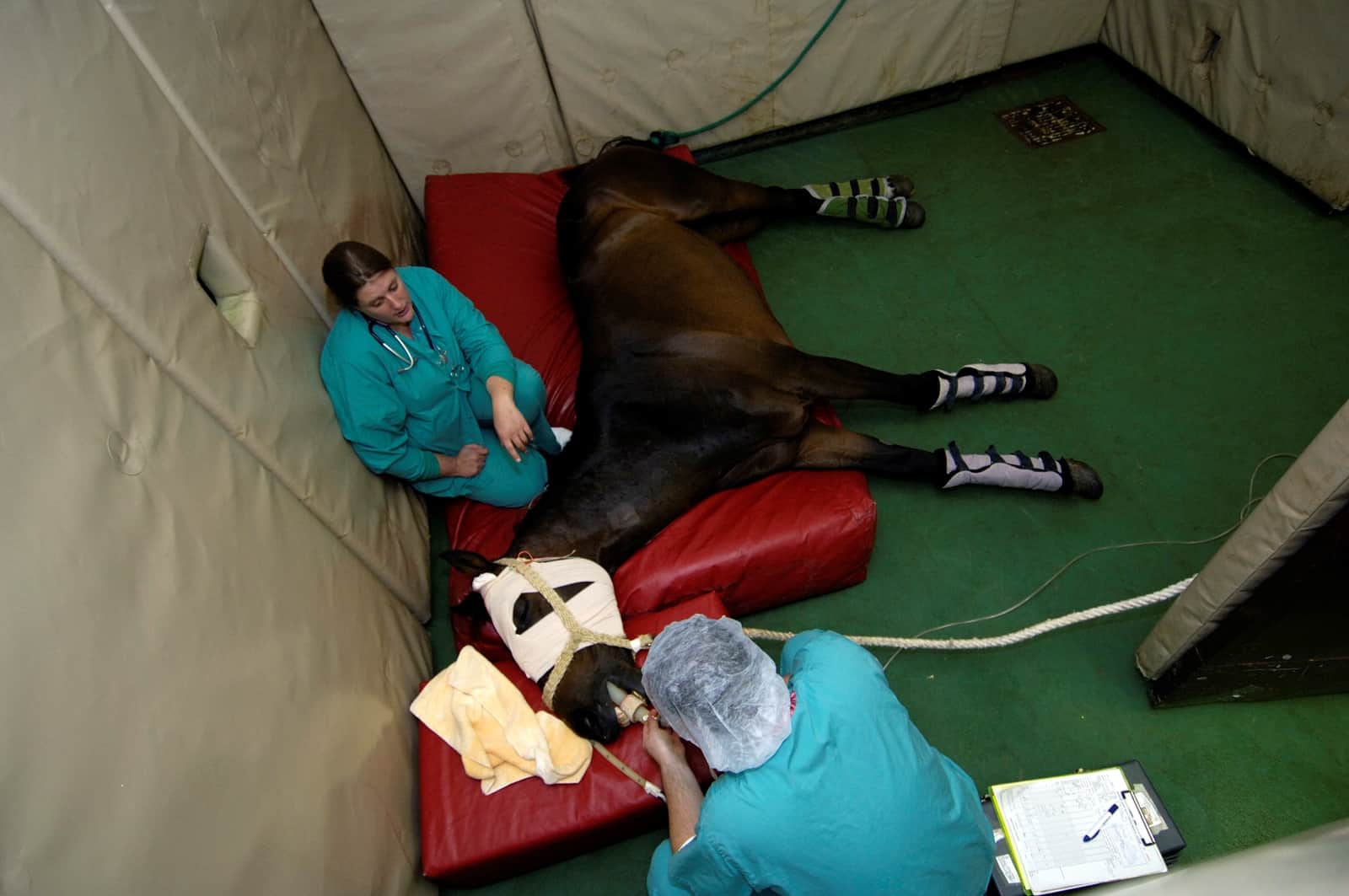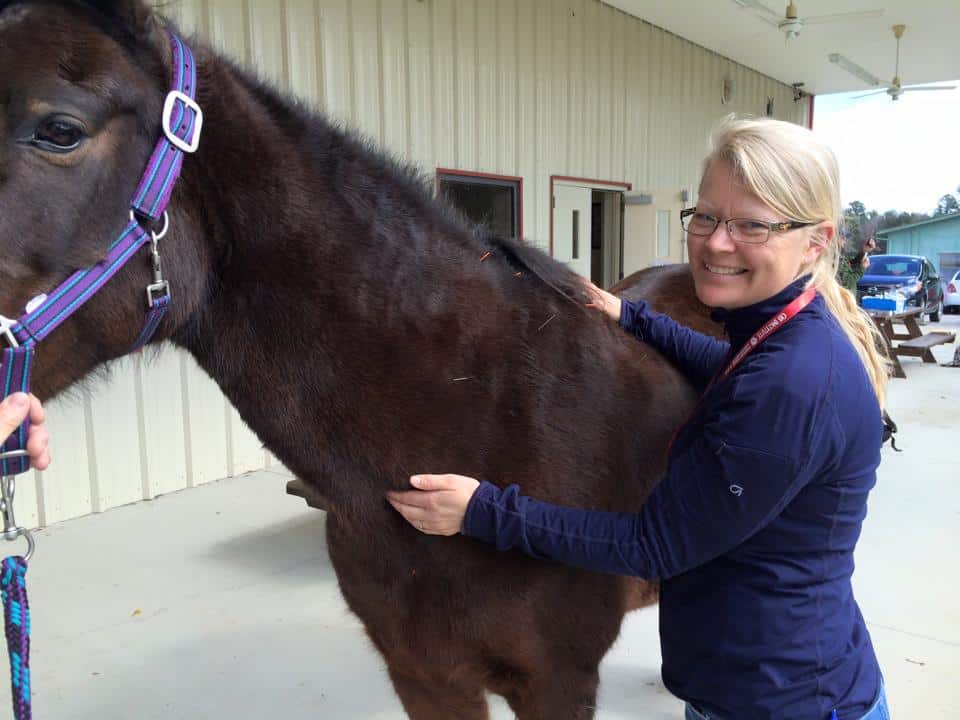The Vet Tech’s Role in Equine Anesthesia Recovery

Inducing and maintaining anesthesia in horses is no easy feat. But one of the most challenging aspects is returning the patient safely to the standing position during recovery. Horses have a flight instinct that prevents them from remaining recumbent in the recovery stall. While we cannot change this instinct, we can use recovery techniques that assist the horse in standing safely. In addition, administering sedative agents can minimize the anxiety or excitement associated with recovery. A skilled team will use a balance of technique and sedation for a safe recovery.
Ideally, the adult horse should remain recumbent until he shows reduced nystagmus, response to sound, and return of menace and tongue tone in response to gentle traction. Menace response is a learned behavior; therefore, foals typically do not respond to stimulation over the eye unless they receive direct contact with the lids or cornea (the latter is not recommended unless in an emergency situation). Depending on the depth of anesthesia and horse size, you can administer 50-100 mg of the sedative xylazine or 5-10 mg romifidine or detomidine intramuscularly just prior to moving the horse into recovery. You can administer an additional small bolus of sedative intravenously if needed. Once the horse is moved from surgery into the recovery stall, have a handler apply pressure to or sit on the dorsal aspect of the neck to maintain recumbency until the horse is ready to stand. Because attempting to maintain recumbency can be difficult and dangerous, it is imperative the handler has a safe exit when the horse begins to move. If this option is not available, staff should administer additional sedation rather than apply physical force. A towel over the horse’s eyes and cotton in his ears help minimize stimulation from outside the stall.
Veterinarians and vet techs can choose from several recovery techniques: unassisted recovery or “self recovery”; rope recovery using ropes on the halter and tail as a pulley system through rings on the walls; pool recovery; sling recovery; and recovery on a tilt table. Their method of choice will depend on the specific case. Self recovery is practical for young, healthy horses after elective procedures. Rope, pool, sling, and tilt table recovery are best for patients with instability or weakness. Rope recovery requires a stall with rings in the walls, strong cotton or web rope, and two people pulling the ropes to assist the horse at the appropriate time. The head rope should be used for support and the tail rope for the majority of assistance. This requires some finesse: Horses need to have freedom in their front end to get momentum to stand; therefore, the head rope should not be pulled tightly until the horse is standing. Pool, sling, and tilt table recovery are typically reserved for horses with fractures or neurologic issues. All methods require a team of handlers for the process, and all team members must understand their respective duties in the process. The veterinary technician is an essential part of these procedures and should have a clear understanding of the process and equipment required
Create a free account with TheHorse.com to view this content.
TheHorse.com is home to thousands of free articles about horse health care. In order to access some of our exclusive free content, you must be signed into TheHorse.com.
Start your free account today!
Already have an account?
and continue reading.

Written by:
Lori Bidwell, DVM, Dipl. ACVA
Related Articles
Stay on top of the most recent Horse Health news with



















